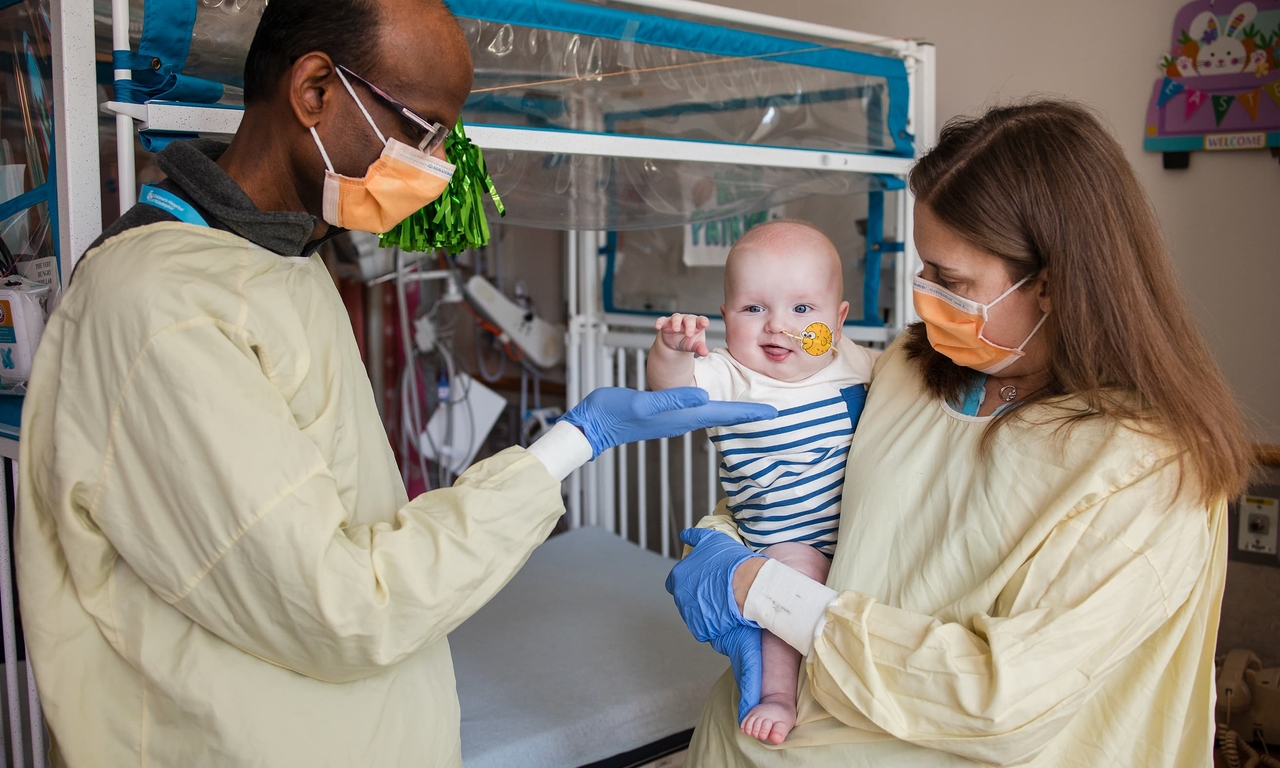
Infant is World's First Patient Treated with Customized CRISPR Gene Editing Therapy
May 21, 2025| |
In a historic breakthrough, a child with a rare and life-threatening condition became the first person to receive a customized CRISPR gene editing therapy by a team at the Children's Hospital of Philadelphia (CHOP) and Penn Medicine. The treatment is the first of its kind designed to correct a disease-causing mutation found only in that individual.
The infant, KJ, was diagnosed with a rare urea cycle disorder. He was born with a rare metabolic disease known as severe carbamoyl phosphate synthetase 1 (CPS1) deficiency. He inherited mutations in each of his two copies of a gene for the liver enzyme CPS1. Without this enzyme, ammonia builds up in the blood when proteins, including ones found in food, are broken down, damaging the brain. According to Rebecca Ahrens-Nicklas, who led the development of the CRISPR therapy, more than half of children born with a CPS1 deficiency die. Patients with CPS1 deficiency, like KJ, are typically treated with a liver transplant.
Ahrens-Nicklas, together with cardiologist, geneticist, and gene editor Kiran Musunuru at Penn, created a base-editing therapy that corrects one of KJ's two copies of the CPS1 gene. After the treatment received approval from the U.S. Food and Drug Administration (FDA), KJ was given a low dose of the treatment in February 2025 when he was 6 months old, followed by larger doses in March and April. He has not shown any serious side effects and is now able to eat more protein than before.
Read more details about this breakthrough in the news releases from CHOP and the New Scientist. Get to know KJ's story here.
| |
You might also like:
- FDA Approves First Gene Therapy using CRISPR-Cas9 to Treat Sickle Cell Disease
- CRISPR Used to Develop Low Glutelin Rice for Phenylketonuria and Kidney Disease Patients
- Researchers Use CRISPR Technology to Treat Beta Thalassemia Patients
Biotech Updates is a weekly newsletter of ISAAA, a not-for-profit organization. It is distributed for free to over 22,000 subscribers worldwide to inform them about the key developments in biosciences, especially in biotechnology. Your support will help us in our mission to feed the world with knowledge. You can help by donating as little as $10.
-
See more articles:
-
Plant
- Study Reveals Genetic Secrets of Rice
- OsKCS11 Links Very-Long-Chain Fatty Acids and Cytokinin in Rice Dwarfism
- UK's Precision Breeding Act for Plants Signed into Law
-
Animal
- Gene Editing Offers Dual Protection Against PRV and PRRSV
-
Food
- Consumers in Ogun State, Nigeria Show Openness to GM Foods
- UN Reports Acute Food Insecurity and Malnutrition Rise for the 6th Consecutive Year
-
Health
- Columbia University and Broad Institute Researchers Develop New Gene Editor for Safer, More Precise Gene Therapies
- Infant is World's First Patient Treated with Customized CRISPR Gene Editing Therapy
-
Read the latest: - Biotech Updates (November 26, 2025)
- Gene Editing Supplement (November 26, 2025)
- Gene Drive Supplement (February 22, 2023)
-
Subscribe to BU: - Share
- Tweet

